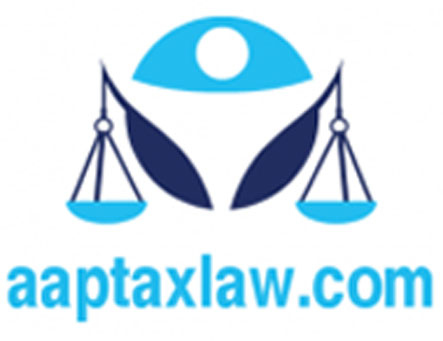

Government of India Act 1935
1. National Emergency or Proclamation 352
2. State Emergency or President's Rule of Constitutional Emergency 356
3. Financial Emergency Article 360
Declared by President with approval (Written Order) from Cabinet (Earlier PM only).
Armed Rebellion - Internal Emergency
War / External aggression - External Emergency - Imminent Danger
44th Amendment, 1978 - Armed Rebellion
i. Invoked by President
Advise of Council of Ministers
ii. Parliamentary Approval
Within 2 Months - 44th Amendment within 1 Month
Simple Majority - 44th Amendment 51% + 2/3 P & V
LS approves 44th Amendment (LS+RS) approves
iii. Revoke
President own will - 44th Amendment President with LS approval. LS can end it.
Emergency is applied and extended as 6 Month + 6 Month + 6 Month. President can revoke emergency within 6 months of Proclamation.
iv. Effect
1. Centre - State
2. Life of Lok Sabha
3. Fundamental Rights
1. Centre State Relations
- States in Control of Central Government (Executive)
- Parliament is Supreme and can make legislation for states (Legislature)
- Funds reallocated with Central Government monopoly (Financial)
- President controls funds
2. Life of Lok Sabha
5 Year Lok Sabha + 1 during emergency (Maximum 6 Month + 6)
Create a Law to extend Lok Sabha
3. Fundamental Rights (Wielmar Germany)
Internal emergency (armed)
External Emergency (war)
Restriction in Article 19 get suspended as per Article 358
4. Duration
6 Month + 6 Month ....
Emergency Declared in India
| 1962 | 1971 | 1975 | |
| Prime Minister | Jawahar Lal Nehru | Indira Gandhi | Indira Gandhi |
| President | Sarvapalli Radhakrishnan | V V Giri | Fakruddin Ali Ahmed |
| Reason | War with China | War with Pakistan | Internal Disturbance |
| Duration | 26th October 1962 to 10th January 1968 | 3rd December 1971 to 17th December 1971 | 25th June 1975 to 21 May 1977 |
Article 356
"Dead Letter" Dr. B. R. Ambedkar
1. Invoked by
President, Article 356 (with or without approval of government)
Article 355 - Central Government to control state during state emergency.
Non effect of state emergency on Fundamental Rights
Grounds for State Emergency
Constitution not being followed by State Government
State Government fails to follow Central Government Orders
2. Parliamentary Approval
Within 2 Months
3. Revoke
President can revoke through proclamation
No parliamentary approval required. Suo Moto.
4. Effect
State Government, Governor -> President
State Government function can be performed by Parliament
President may / may not dismiss Council of Ministers of State
When State Government is dismissed, Proclamation power of Governor shall be vested with President
President can - Consolidated Fund of India -> Consolidated Fund Stats
President cannot suspend power of High Court
5. Duration
6 Month+ 6 Month - National Emergency Declared
2 Years - Election Commission notified that election cannot be conducted, so Extra time
Total 3 Years
| National Emergency | State Emergency | |
| 1. | All States | One State |
| 2. | Fundamental rights suspends | Fundamental rights are there |
| 3. | Maximum ... Year | Maximum 3 Years |
| 4. | Lok Sabha then Parliament | Parliament without Lok Sabha |
| 5. | Grounds - War - Armed Rebellion - External emergencies |
Grounds - Constitution - Order of Central Government |
| 6. | Special Majority | Simple Majority |
| 7. | Less controversial | More controversial |
Article 360
1. Invoked by President
Grounds for Financial Emergency
- Financial Stability
- Credit of India
2. Parliamentary Approval
- Within 2 Months
- Simple Majority
- No PA required to continue/ extend
3. Revoke
President proclamation
4. Effect
i. Salaries
ii. Money bills can be withheld by President
iii. Financial matters of state -> Central Government
Note for LLB Entrance Examinations
Muslim Law
Nikah- Muslim Marriage Conditions
Hindu Law
Hindu Adoption and Maintenance Act 1956
Hindu Minority and Guardianship Act 1956
Hindu Succession Act 1956 Notes
Special Marriage Act 1954 Notes
Historic Development of Law in India
Constitution of India
Preamble of the Constitution of India
Fundamental Rights in Constitution of India
Article 32 Remedies for enforcement of rights
Directive Principles of State Policy
Executive, Judiciary, President, VP
Extent of Powers of Union, Supreme Court etc
State Judiciary, High Court, Lower Courts
Parliament, Council of states, house of people
Introduction and passing bills, budget etc
State Legislature, Composition, duration
Bills, Money Bill, Finance Bill, Proceedings
Emergency - National, State, Financial
EC, PSC, Finance, NCSC, NCST, NCBC
Non Constitutional Bodies, Niti ayog, NHRC etc
Panchayat, Municipality, Cooperative Societies
Important amendments to the Constitution
PIL - Public Interest Litigation, Judicial Review
Doctrine of Basic Structure in Constitution
Constitution of India Schedules and Provisions
Criminal Laws
Theft, Extortion, Robbery, Cheating etc
Tress Pass, Negligence, Nuisance, Defamation
Liability - Vicarious, Strict, Absolute Liability
Crime, Stages, Elements, General Exceptions
IPC Chapter, Provisions and Sections
Crime, origin, Elements, Stages Exceptions
Indian Penal Code Sections and Description
Other Laws, International bodies etc
Law of Torts - Civil Tort, Criminal Tort
Contract Essentials valid, void, voidable
United Nations, UNGA, UNSC, ICJ, UN ECOSOC